内容
泰国利用再生医学改善健康
泰国是一个特别的地方,善良睿智的医生能帮助人们恢复健康。他们运用新奇的器械和温柔的护理,治愈你的身体,让你重获健康。
泰国的医生不仅为您治病,更致力于让您感到快乐健康。您的每一步都充满善意和智慧。
在泰国,您可以找到专为您量身定制的特别计划。这些套餐能帮助您改善生活,并对未来充满信心。
想象一下,每天都感觉更强壮、更快乐。 在泰国接受干细胞疗法,每一步都能帮助您痊愈,绽放笑容。这是一种焕然一新、感觉最好的方式!
关键要点
• 地点:泰国 • 治疗程序:干细胞疗法 • 套餐价格: 1,900 美元起 • 其他国家费用: 25,000 美元 - 50,000 美元 • 热门旅游景点:大皇宫、玉佛寺、普吉岛大佛等等。 |
泰国全包干细胞治疗套餐
泰国的干细胞疗法有助于您的身体康复,增强体质。它利用微小细胞来修复问题,让您感觉更舒适。
泰国有什么好玩的?泰国有专门为您定制的旅游套餐。这些套餐包括:
医生谈话:与聪明、善良的医生见面,检查您需要什么。
测试和计划:医生会进行测试并制定计划来帮助您康复。
干细胞治疗:通过治疗,您会感觉更好、更强壮。
额外护理:治疗后,医生和护士会帮助您康复。
住宿地点:如果您需要,他们会帮助您找到一个不错的住宿地点。
为什么选择泰国?泰国的医生关心您。他们会为您量身定制治疗方案,并使用安全先进的医疗设备。诊所干净整洁,服务热情周到,随时准备帮助您恢复健康。
今天就开始感觉好起来!泰国的干细胞疗法可以帮助您痊愈,重拾活力。在充满关爱和关怀的地方,这是一种获得所需护理的绝佳方式。
`泰国干细胞治疗费用
泰国是接受干细胞治疗的好地方。费用低廉,而且护理质量很好。泰国的医生聪明又友善。他们使用特殊的工具来帮助你的身体康复,让你感觉更好。
在泰国,干细胞治疗的费用在1,900美元到12,575美元之间。这个价格比许多其他国家,尤其是西方国家要低得多。这使得泰国成为那些想要在不花太多钱的情况下获得更好感觉的人的理想选择。
费用取决于您需要的治疗类型和疗程次数等因素。即使费用较低,护理质量仍然很高。医生确保每个人都能获得所需的帮助,保持健康强壮。
如果您想感觉更好又省钱,泰国是您的理想之选。这里拥有优质的医生、诊所和价格,对于任何需要医疗服务的人来说都是一个明智的选择。
Stem Cell Therapy 中心成本比较 Thailand
| 提供者 | 程序 | 价格 |
|---|---|---|
| Vega Stem Cell Clinic in Bangkok Thailand | Stem Cell Treatment for Autism, Stem Cell Therapy | $4300 |
| Vega Stem Cell Clinic in Bangkok Thailand | Stem Cell Treatment for Kidney Failure, Stem Cell Therapy | $6850 |
| Vega Stem Cell Clinic in Bangkok Thailand | Stem Cell Treatment for Spinal Cord Injury, Stem Cell Therapy | $12575 |
| Vega Stem Cell Clinic in Bangkok Thailand | Stem Cell Treatment for Erectile Dysfunction, Stem Cell Therapy | $15000 |
| Vega Stem Cell Clinic in Bangkok Thailand | Stem Cell Treatment for Parkinsons Disease, Stem Cell Therapy | $10000 |
| Vega Stem Cell Clinic in Bangkok Thailand | Stem Cell Treatment for Hair Loss, Stem Cell Therapy | $1850 |
Stem Cell Therapy Cost Comparison in Thailand
| 国家 | 程序 | 价格 |
|---|---|---|
| United States | Bone Marrow Stem Cell Therapies, Stem Cell Therapy | $50000 |
| United States | Stem Cell Treatment for Autism, Stem Cell Therapy | $25000 |
| United States | Stem Cell Treatment for Cerebral Palsy, Stem Cell Therapy | $35000 |
| United States | Stem Cell Treatment for Parkinsons Disease, Stem Cell Therapy | $25000 |
| United Kingdom | Stem Cell Treatment for Multiple Sclerosis, Stem Cell Therapy | $37973 |
泰国排名前三的干细胞治疗医院
探索泰国顶尖医院,了解其提供先进干细胞疗法的骨科、神经科和自身免疫性疾病治疗方案。享受世界一流的护理、尖端疗法以及价格实惠的专业解决方案,有效缓解关节疼痛、抗衰老等问题。
探索泰国北科生物科技、Vega 干细胞诊所和 Surecell 诊所的顶级干细胞疗法,为各种疾病提供创新治疗。
观看有关泰国再生疗法的资讯视频
通过这些引人入胜、内容丰富的视频了解有关泰国干细胞疗法的更多信息。
这些视频展示了泰国干细胞疗法的工作原理以及它如何帮助您感觉更好。
您将看到:
医生谈论他们如何帮助人们。
患者接受治疗后感到幸福的故事。
医生利用干细胞修复身体的新方法。
为什么要观看?
这些视频让您轻松了解再生医学。它们可以帮助您判断这种治疗方法是否适合您。
开始您的旅程
看看泰国的特殊护理和聪明的医生如何帮助您再次感到强壮和快乐。
人们对泰国干细胞疗法的看法
在泰国接受干细胞治疗的人们分享着许多精彩的故事。他们讲述了干细胞治疗如何帮助他们感觉更好,并给他们带来了希望。
它如何帮助他们
感觉更健康、更强壮。
减少痛苦,过上更好的生活。
再次感到快乐和充满希望。
关怀备至的医生:泰国的医生非常善良、睿智。他们采用安全新颖的治疗方法,帮助患者康复,感觉更舒适。
这些故事为何重要:这些故事展现了干细胞疗法如何改变生命,也展现了泰国医生和护士如何辛勤工作,让患者感觉更好。
看看有什么可能:向真实的人学习这种治疗方法如何帮助您再次感到强大和快乐!
泰国干细胞治疗常见问题 (FAQ)
泰国是接受干细胞治疗的理想之地。治疗费用低廉,而且护理质量一流。泰国的医生聪明又友善。他们会使用特殊的工具来帮助您的身体康复,让您感觉更舒适。以下是一些关于泰国干细胞治疗的常见问题:
1. 什么是干细胞疗法?它是如何起作用的?
干细胞疗法是一种再生医学疗法,利用干细胞修复或替换受损的组织或器官。干细胞能够分化成不同类型的细胞,因此能够有效治疗各种疾病,例如关节疼痛、神经系统疾病和慢性损伤。
在泰国,干细胞疗法主要用于治疗骨关节炎、退行性椎间盘疾病以及自身免疫性疾病等疾病。该疗法需要从患者自身(例如脂肪或骨髓)或捐赠者体内采集干细胞,然后将其注射到患处,以促进愈合和再生。
2. 泰国的干细胞治疗费用是多少?
在泰国,干细胞治疗的费用取决于治疗类型和治疗情况。平均而言,患者每次干细胞治疗的费用在2,500 美元到 15,000 美元之间。该费用通常包含咨询费、治疗本身以及后续复诊费。然而,复杂的治疗或需要多次疗程的疗法可能会花费更多。
3. 泰国的干细胞治疗安全吗?
在泰国,如果在信誉良好、获得认证的医疗中心进行干细胞治疗,通常被认为是安全的。泰国拥有完善的医疗体系,许多提供干细胞治疗的诊所都遵循国际标准。选择一家拥有经验丰富的专业人员、操作透明且注重患者护理的诊所至关重要。请务必咨询医生,了解潜在风险、副作用以及治疗的具体细节。
4. 干细胞治疗多久才能看到效果?
疗效见效时间会因治疗情况和个体对治疗的反应而异。有些患者报告几周内病情有所改善,而有些患者则可能需要几个月才能看到明显变化。患者通常会接受随访,以监测病情进展,并在必要时调整治疗方案。
5. 干细胞治疗有任何风险或副作用吗?
虽然干细胞疗法总体上是安全的,但与任何医疗程序一样,它也存在一些风险。一些可能的副作用包括:
注射部位轻微疼痛或肿胀
感染(罕见)
炎症暂时加剧
这些副作用通常轻微且短暂。然而,在进行治疗之前,务必咨询医生,确保您适合接受干细胞治疗,并了解您的病情可能存在的风险。
6. 接受干细胞治疗后我需要留在泰国吗?
对于大多数患者来说,接受干细胞治疗后,在泰国短期停留7至10天即可。在此期间,您将进行复诊,以评估您的进展并确保良好的恢复。某些情况可能需要额外的治疗或监测,这可能会延长您的住院时间。您的医生将根据您的治疗方案和进展情况,制定个性化的康复计划。
7. 干细胞疗法可以治愈慢性病吗?
干细胞疗法可以帮助控制和治疗慢性疾病的症状,但它不一定能以传统意义上的方式“治愈”它们。例如,干细胞疗法可以帮助减轻疼痛、改善活动能力,并促进骨关节炎或椎间盘退变等疾病的愈合,但效果可能因人而异。务必设定切合实际的预期,并与医疗保健提供者讨论潜在的治疗结果。
8. 在泰国选择干细胞治疗诊所时我应该注意什么?
在泰国选择干细胞治疗诊所时,请考虑以下因素:
认证:寻找获得国际医疗机构(例如国际联合委员会 (JCI))认证的诊所。
经验丰富的医生:确保诊所拥有专门从事干细胞治疗的经验丰富的专业人员。
患者评论:研究以前患者的评论和推荐,以了解诊所的护理质量,但要从 PlacidWay 等值得信赖的平台获取。
治疗透明度:选择一家清楚解释治疗过程、费用和任何潜在风险的诊所。
设施标准:确保诊所保持高标准的清洁、安全和患者护理。
9. 泰国干细胞治疗后需要进行任何后续护理吗?
治疗后护理对于确保最佳疗效至关重要。治疗后,您可能会被建议:
几周内避免剧烈活动
遵循特定的康复或物理治疗计划(如有必要)
参加后续预约以监测进展
保持健康饮食以促进康复
您的医生将根据您的具体治疗情况为您提供详细的术后护理指导。
10. 我可以将干细胞疗法与其他治疗或疗法结合吗?
是的,干细胞疗法有时可以与其他疗法结合使用,具体取决于您的具体情况。例如,有些患者会将干细胞疗法与物理疗法或富血小板血浆 (PRP) 注射相结合,以增强疗效。在结合治疗之前,请务必咨询您的医疗保健提供者,以确保找到最适合您康复的方法。
How much does stem cell therapy for knee Arthritis in Thailand?
Living with knee arthritis can be a daily struggle, with pain and stiffness limiting your ability to enjoy life to the fullest. If you're seeking a modern and effective solution, you may have come across stem cell therapy for knee arthritis. This innovative treatment is gaining popularity, and Thailand has emerged as a leading destination for high-quality, affordable procedures. But what exactly is the cost of stem cell therapy for knee arthritis in Thailand? The cost of stem cell therapy for knee arthritis in Thailand typically ranges from $2,000 to $8,000 USD. This price can vary depending on the clinic, the specifics of the treatment plan, and the type of stem cells used. While this might seem like a significant investment, it's considerably more affordable than in many Western countries, making it an attractive option for medical tourists. This blog post will break down everything you need to know about the cost and what to expect from this cutting-edge treatment in Thailand. What is the average cost of stem cell therapy for knees in Thailand? "The average cost of stem cell therapy for knees in Thailand is approximately $3,000 to $7,000 USD per knee." This price point is a general estimate and can fluctuate based on several factors. It's crucial to get a personalized quote from a reputable clinic. This cost often includes the initial consultation, the procedure itself, and in some cases, follow-up appointments. Compared to the United States, where similar treatments can cost upwards of $10,000 to $20,000, Thailand offers significant savings without compromising on quality. What factors influence the cost of stem cell therapy for knee arthritis in Thailand? "The primary factors influencing the cost of stem cell therapy for knee arthritis in Thailand include the clinic's reputation, the type of stem cells used, the complexity of your condition, and the number of treatments required." Let's delve deeper into these factors: Clinic Reputation and Location: Internationally accredited hospitals in major cities like Bangkok or Phuket may have higher prices due to their state-of-the-art facilities and experienced medical teams. Type of Stem Cells: The source of the stem cells plays a significant role in the cost. Autologous stem cells, which are harvested from your own body (usually from bone marrow or adipose tissue), can be more affordable than allogeneic stem cells, which are sourced from a donor (like umbilical cord tissue). Severity of Arthritis: The extent of the damage to your knee cartilage will determine the number of stem cells needed and potentially the number of treatment sessions, directly impacting the overall cost. Treatment Protocol: A comprehensive treatment plan that includes multiple injections or additional therapies like Platelet-Rich Plasma (PRP) will naturally be more expensive. What is typically included in the price of stem cell therapy for knees? "The quoted price for stem cell therapy for knees in Thailand usually includes the doctor's consultation, the stem cell harvesting and processing, the injection procedure, and post-treatment follow-up care." It's essential to confirm with the clinic what is covered in their package. Many reputable clinics in Thailand that cater to international patients offer all-inclusive packages. These may also cover: Pre-treatment diagnostic tests like MRIs or X-rays. Anesthesia fees. Medications prescribed after the procedure. In some cases, airport transfers and accommodation assistance. Always request a detailed cost breakdown to avoid any hidden charges. Understanding what's included will help you accurately compare prices between different clinics and make an informed decision. Are there different types of stem cell treatments for knees, and how do they affect the cost? "Yes, there are different types of stem cells used for treating knee arthritis in Thailand, with the most common being mesenchymal stem cells (MSCs) derived from bone marrow, adipose tissue, or umbilical cord tissue. The source of the stem cells can influence the final cost." Bone Marrow-Derived Stem Cells (BMAC): This involves a procedure to aspirate bone marrow from your hip bone. It is a common and effective method, and the cost is often in the mid-range. Adipose-Derived Stem Cells: These are harvested from your body fat through a mini-liposuction procedure. This method can yield a higher number of stem cells and may be priced slightly differently than BMAC. Umbilical Cord-Derived Stem Cells: These allogeneic stem cells are sourced from the umbilical cords of healthy, screened donors. They are known for their high potency and may be at the higher end of the price spectrum. How does the cost in Thailand compare to other countries? "The cost of stem cell therapy for knee arthritis in Thailand is significantly lower than in countries like the United States, the UK, or Australia, often by 50-70%." This cost-effectiveness is a major draw for medical tourists. For instance, a procedure that might cost $15,000 in the U.S. could be as low as $5,000 in Thailand. This price difference is not a reflection of lower quality but is due to factors like lower overhead costs and the competitive healthcare market in Thailand. Is financing available for stem cell therapy in Thailand? "While direct financing from the clinics themselves is not always common, many medical tourism agencies that partner with Thai hospitals offer financing options or payment plans for international patients." It's worth inquiring about these possibilities when you are researching your options. Some patients also choose to use personal loans or medical credit cards to cover the cost of their treatment. Are there any hidden costs I should be aware of? "To avoid surprises, it's crucial to ask for a comprehensive quote that outlines all potential costs. Hidden costs for stem cell therapy for knee arthritis could include travel expenses, accommodation, and any unforeseen medical needs." While clinics are generally transparent about their pricing, you should budget for: Flights and Visa: The cost of travel to and from Thailand. Accommodation: Your stay during the treatment and recovery period. Daily Expenses: Food, transportation within the city, and other personal needs. Additional Medical Care: In the rare event of complications, you might incur extra medical expenses. What is the success rate of stem cell therapy for knee arthritis in Thailand? "The success rate for stem cell therapy for knee arthritis in Thailand is generally high, with many patients reporting significant pain reduction and improved mobility. Success rates can vary depending on the individual's condition and the treatment protocol." Reputable clinics in Thailand often have experienced orthopedic specialists who follow international best practices. Many patients experience a noticeable improvement in their symptoms within a few months of the procedure. It's important to have realistic expectations and understand that while many experience great results, it is not a guaranteed cure for everyone. How do I choose a reputable clinic in Thailand? "Choosing a reputable clinic for stem cell therapy in Thailand involves researching their credentials, reading patient reviews, and ensuring they have experienced orthopedic specialists." Look for clinics that are: Internationally Accredited: Accreditations like JCI (Joint Commission International) are a good indicator of high standards. Transparent with Pricing: They should provide a clear and detailed cost breakdown. Experienced in Regenerative Medicine: The medical team should have a proven track record in performing stem cell therapies. Well-Reviewed by Previous Patients: Look for testimonials and reviews on independent platforms. What does the treatment process typically involve? "The treatment process for stem cell therapy for knee arthritis in Thailand usually involves an initial consultation and evaluation, followed by the stem cell harvesting and injection procedure, and a period of recovery and follow-up." The typical steps are: Consultation: A thorough examination by an orthopedic specialist, including a review of your medical history and imaging scans. Stem Cell Harvesting (if autologous): A minimally invasive procedure to collect bone marrow or adipose tissue. Processing: The collected sample is processed in a lab to isolate and concentrate the stem cells. Injection: The concentrated stem cells are injected directly into the affected knee joint, often under ultrasound guidance for precision. Recovery: A short recovery period is usually required, with most patients able to walk shortly after the procedure. How long do I need to stay in Thailand for the treatment? "For stem cell therapy for knee arthritis in Thailand, you will typically need to stay in the country for about 7 to 14 days." This timeframe allows for the initial consultation, the procedure itself, and a follow-up appointment to monitor your initial recovery before you travel back home. The exact duration will be advised by your chosen clinic based on your specific treatment plan. What are the risks associated with this treatment? "The risks associated with stem cell therapy for knee arthritis are generally low and comparable to other joint injection procedures. Potential risks include infection, bleeding, and pain at the injection site." Choosing a reputable clinic with strict hygiene protocols can significantly minimize these risks. The use of autologous stem cells (from your own body) also reduces the risk of rejection or allergic reactions. Ready to explore your options for a pain-free life? PlacidWay can help you connect with leading clinics in Thailand for stem cell therapy for knee arthritis. Explore our network of trusted healthcare providers and take the first step towards better mobility.
How Much Does Stem Cell Therapy for Diabetes Cost in Bangkok, Thailand?
The cost of stem cell therapy for diabetes in Bangkok, Thailand typically ranges from $8,000 to $30,000 USD. This price can vary depending on the type of diabetes, the source of stem cells, the clinic's reputation, and the specific inclusions in the treatment package. Embarking on a journey to manage diabetes can often feel like a constant balancing act. For many, the prospect of innovative treatments like stem cell therapy offers a beacon of hope. Bangkok, a global hub for medical tourism, has emerged as a leading destination for this cutting-edge procedure. If you're considering this path, your primary question is likely, "How much does stem cell therapy for diabetes cost in Bangkok, Thailand?" The answer isn't a single figure but a range, influenced by a multitude of factors. This comprehensive guide will walk you through every aspect of the cost, what to expect from the treatment, and why so many are turning to Bangkok for this life-changing therapy. The allure of Bangkok for medical treatments isn't just about the potential for significant cost savings compared to Western countries. It's also about access to world-class medical facilities, experienced specialists, and a healthcare system that is increasingly embracing regenerative medicine. For individuals with both Type 1 and Type 2 diabetes, understanding the financial implications is the first step toward making an informed decision. This blog post will delve deep into the specifics, breaking down the costs, and providing you with a clear picture of what a stem cell therapy journey in Bangkok entails. From the initial consultation to post-treatment care, we will explore every facet of the process. You'll gain insights into the different types of stem cells used, how they impact the overall price, and what you can expect to be included in a typical treatment package. Our goal is to provide you with a detailed, human-centric overview that empowers you to navigate your options with confidence. What is the average cost of stem cell therapy for diabetes in Bangkok? The average cost of stem cell therapy for diabetes in Bangkok is approximately $15,000 to $25,000 USD. This is a general estimate, and the final price can be lower or higher depending on individual patient needs and the chosen clinic. The cost of stem cell therapy for diabetes in Bangkok is a significant consideration for anyone contemplating this treatment. While it's more affordable than in many Western countries, the price can still vary substantially. The average range of $15,000 to $25,000 typically covers the core procedure, but it's crucial to understand what this includes. Several factors contribute to this price range. The reputation and accreditation of the clinic play a significant role. Well-established centers with a long history of successful treatments and international certifications may charge more. The expertise of the medical team is another critical factor; highly experienced specialists in regenerative medicine often command higher fees. Finally, the complexity of your specific condition will also influence the cost. How does the cost differ for Type 1 and Type 2 diabetes? The cost of stem cell therapy can be higher for Type 1 diabetes compared to Type 2. This is because Type 1 is an autoimmune disease requiring a more complex approach to modulate the immune system and regenerate insulin-producing cells. The treatment protocols for Type 1 and Type 2 diabetes differ, which in turn affects the cost. Type 1 diabetes is an autoimmune condition where the body's immune system destroys insulin-producing beta cells in the pancreas. Stem cell therapy for Type 1 often involves a more intricate protocol aimed at not only replacing the damaged cells but also regulating the immune system to prevent further attacks. This can involve a higher number of stem cells or more specialized types of cells, leading to a higher cost. For Type 2 diabetes, the primary issue is insulin resistance or insufficient insulin production. Stem cell therapy for Type 2 diabetes focuses on improving insulin sensitivity and enhancing the function of existing pancreatic cells. While still a sophisticated procedure, the protocol may be less complex than that for Type 1, potentially resulting in a lower cost. It's essential to have a thorough evaluation by a specialist in Bangkok to determine the most appropriate and cost-effective treatment plan for your specific type of diabetes. What are the main factors influencing the cost of treatment? The primary factors influencing the cost are the type and source of stem cells, the number of cells required, the clinic's reputation and technology, the duration of the treatment program, and the inclusion of additional therapies. Understanding the variables that determine the final price of your stem cell therapy is crucial for financial planning. Here’s a breakdown of the key cost drivers: Type and Source of Stem Cells: The two main types of stem cells used are autologous (from the patient's own body) and allogeneic (from a donor, typically umbilical cord tissue). Allogeneic stem cells are often preferred for diabetes due to their potent regenerative capabilities and lack of an autoimmune memory. However, they are generally more expensive to source and process than autologous cells. Number of Stem Cells: The total number of stem cells required for your treatment will directly impact the cost. This is determined by your body weight, the severity of your diabetes, and the specific protocol recommended by the clinic. Clinic and Technology: Leading clinics in Bangkok invest heavily in state-of-the-art laboratory facilities and advanced technologies for cell processing and administration. This commitment to quality and safety is reflected in the price. Treatment Program Duration: Some treatment protocols may require a single visit, while others may involve multiple infusions over several days or weeks. The length of your stay and the intensity of the treatment will affect the overall cost. Additional Therapies: Many clinics offer comprehensive programs that include supportive therapies like physiotherapy, nutritional counseling, and IV vitamin drips. These can enhance the effectiveness of the stem cell treatment but will add to the total cost. What is typically included in a stem cell therapy package in Bangkok? A typical package includes the initial consultation, pre-treatment diagnostics, the stem cell infusion procedure, doctor's fees, and some post-treatment follow-up. More comprehensive packages may also include accommodation, airport transfers, and supportive therapies. When you receive a quote for stem cell therapy for diabetes in Bangkok, it's important to understand exactly what is covered. A standard package usually includes: Initial Medical Evaluation: A thorough assessment of your medical history and current health status. Pre-treatment diagnostics: Blood tests, and other necessary examinations to ensure you are a suitable candidate for the therapy. Stem Cell Procedure: The harvesting (if autologous), processing, and administration of the stem cells. Medical Team Fees: The fees for the specialists, nurses, and other medical staff involved in your care. Post-treatment Monitoring: A certain period of monitoring at the clinic after the procedure. More inclusive, and therefore more expensive, packages may also offer: Accommodation: A stay in a partner hotel for the duration of your treatment. Airport Transfers: Transportation to and from the airport and the clinic. Translation Services: If required. Supportive Therapies: A range of complementary treatments to support your recovery and well-being. Always request a detailed, itemized quote from the clinic to avoid any unexpected expenses. Are there any hidden or additional costs to consider? Yes, potential hidden costs can include flights, visa fees, travel insurance, accommodation (if not in the package), meals, and any additional medical consultations or treatments that may be required outside of the initial package. While clinics in Bangkok are generally transparent with their pricing, it's wise to budget for potential additional expenses. These can include: Flights and Visa: The cost of traveling to and from Bangkok is a significant expense that is not included in the treatment price. Travel and Medical Insurance: It is highly recommended to have comprehensive insurance that covers you for the duration of your stay. Accommodation and Living Expenses: If your package does not include accommodation, you will need to budget for your hotel stay, meals, and local transportation. Extended Stay: If you need to stay in Bangkok for longer than initially planned for any reason, this will incur additional costs. Follow-up Medications: You may need to purchase medications to take with you after you leave the clinic. Contingency Fund: It's always a good idea to have a contingency fund for any unforeseen circumstances. How does the cost in Bangkok compare to other countries? The cost of stem cell therapy for diabetes in Bangkok is significantly lower than in countries like the United States, the UK, or Australia, where similar treatments can cost upwards of $50,000 to $100,000 USD. One of the primary reasons patients travel to Bangkok for stem cell therapy is the substantial cost savings. The table below provides a general comparison of the estimated costs for stem cell therapy for diabetes in different countries. Country Estimated Cost (USD) Bangkok, Thailand $8,000 - $30,000 United States $50,000 - $100,000+ United Kingdom $40,000 - $80,000+ Australia $45,000 - $90,000+ Export to Sheets It's important to note that these are approximate figures and can vary. However, the trend is clear: Bangkok offers a much more affordable option without compromising on the quality of care. This cost-effectiveness makes it a viable choice for many individuals who might not be able to afford the treatment in their home country. What are the different types of stem cells used and how do they affect cost? The main types are allogeneic (from a donor) and autologous (from the patient). Allogeneic cells, particularly those from umbilical cords, are often used for diabetes and are typically more expensive due to the screening, processing, and storage involved. The choice of stem cells is a critical aspect of your treatment and has a direct impact on the cost. Allogeneic Stem Cells: These cells are sourced from a healthy donor, most commonly from umbilical cord tissue. They are considered very potent and have strong regenerative and immunomodulatory properties, making them a popular choice for treating autoimmune conditions like Type 1 diabetes. The cost is higher due to the rigorous screening of donors, the complex process of harvesting and storing the cells, and ensuring they are safe for transplantation. Autologous Stem Cells: These cells are harvested from the patient's own body, usually from bone marrow or adipose (fat) tissue. The main advantage is that there is no risk of rejection. However, for older patients or those with long-standing chronic diseases, the quality and quantity of their own stem cells may be diminished. The cost is generally lower as it doesn't involve donor sourcing and extensive screening. For diabetes, many clinics in Bangkok prefer to use allogeneic mesenchymal stem cells (MSCs) from umbilical cords due to their superior therapeutic potential for this condition. What should I look for in a reputable stem cell clinic in Bangkok? Look for clinics with international accreditations, experienced doctors specializing in regenerative medicine, transparent pricing, positive patient testimonials, and clear communication about their treatment protocols and success rates. Choosing the right clinic is paramount to the success and safety of your treatment. Here are key things to look for: Accreditation and Licensing: Ensure the clinic is licensed by the Thai Ministry of Public Health and ideally has international accreditations. Experienced Medical Team: Research the qualifications and experience of the doctors. They should have a proven track record in regenerative medicine and treating diabetes. Transparent Pricing: A reputable clinic will provide you with a clear, itemized quote with no hidden costs. Patient Reviews: Look for genuine testimonials from previous patients to get an idea of their experiences and outcomes. Clear Communication: The clinic should be willing to answer all your questions and provide detailed information about their treatment protocols, the type of stem cells they use, and their realistic success rates. What is the success rate of stem cell therapy for diabetes in Bangkok? While not a guaranteed cure, many patients report significant improvements in blood sugar control, a reduced need for insulin, and an overall better quality of life. Success rates vary depending on the individual and the specific treatment. It's important to have realistic expectations about the outcomes of stem cell therapy for diabetes. While it is not yet considered a definitive cure, many patients experience significant benefits. Reported improvements include: Better glycemic control Reduced dependence on insulin injections Increased energy levels Improved kidney function in cases of diabetic nephropathy Enhanced overall well-being The success of the therapy depends on various factors, including the patient's age, the duration and severity of their diabetes, their overall health, and their adherence to post-treatment lifestyle recommendations. Reputable clinics in Bangkok will provide you with a realistic prognosis based on your individual circumstances. What does the pre-treatment process involve? The pre-treatment process typically involves a detailed medical evaluation, including a review of your medical history, blood tests, and other diagnostics to confirm your suitability for the therapy and to tailor the treatment plan. Before you undergo stem cell therapy, you will go through a comprehensive pre-treatment process to ensure your safety and to maximize the effectiveness of the procedure. This usually includes: Initial Consultation: A detailed discussion with a specialist to understand your medical history and treatment goals. Medical Assessment: A series of blood tests and potentially other diagnostic imaging to get a complete picture of your health. Lifestyle Recommendations: You may be advised to make certain lifestyle changes in the weeks leading up to your treatment, such as stopping smoking, avoiding alcohol, and eating a healthy diet. Medication Adjustments: Your doctor may ask you to stop taking certain medications, such as anti-inflammatory drugs, that could interfere with the stem cell therapy. What can I expect during the treatment itself? The treatment is usually administered intravenously (IV infusion) and is a minimally invasive procedure that can take a few hours. The medical team will monitor you closely throughout the process. The administration of stem cells is a relatively straightforward and minimally invasive procedure. In most cases, the stem cells are delivered into the body through an intravenous (IV) drip. The process is painless and typically takes a few hours to complete. During the infusion, you will be in a comfortable, clinical setting, and the medical team will monitor your vital signs to ensure your safety and comfort. Some clinics may use other methods of administration depending on the specific protocol, but IV infusion is the most common for systemic conditions like diabetes. What is involved in post-treatment care and follow-up? Post-treatment care involves a period of rest, followed by a gradual return to normal activities. Follow-up usually includes regular communication with the clinic to monitor your progress, and you will be given lifestyle and dietary recommendations. Your recovery and the long-term success of the treatment depend heavily on your post-treatment care. You will be advised to: Rest: Get plenty of rest in the days following the procedure to allow your body to heal and the stem cells to start their work. Healthy Lifestyle: Continue with a healthy diet and lifestyle to support the regenerative process. Avoid Strenuous Activity: You will be advised to avoid strenuous exercise for a certain period. Follow-up: Reputable clinics in Bangkok will have a follow-up schedule, which may include phone or video consultations, to monitor your progress and provide ongoing support. How long do I need to stay in Bangkok for the treatment? The recommended length of stay can range from a few days to a few weeks, depending on the complexity of your treatment protocol. This allows for pre-treatment assessments, the procedure itself, and a short period of post-treatment observation. The duration of your stay in Bangkok will depend on the specifics of your treatment plan. Some protocols may be completed within a week, while more comprehensive programs may require a stay of two to three weeks. This timeframe allows for: Initial consultations and pre-treatment tests. The stem cell administration. A period of observation and initial recovery before you are cleared to travel back home. It is advisable to plan for a slightly longer stay than the minimum recommended to have a more relaxed experience and to accommodate any unforeseen needs. Are there financing options available for the treatment? While direct financing from clinics is not common, some may have partnerships with medical financing companies. Patients often use personal savings, medical loans, or credit cards to cover the cost. Financing a significant medical procedure like stem cell therapy is a common concern. While most clinics in Bangkok require payment upfront, there are several avenues you can explore: Medical Loans: Many financial institutions offer loans specifically for medical procedures. Personal Savings: Many patients plan and save for the treatment over time. Credit Cards: Using a credit card can be an option, especially those with low-interest promotional periods. Crowdfunding: Some individuals have successfully raised funds for their treatment through online crowdfunding platforms. It's recommended to discuss payment options with the clinic beforehand and to explore all available financial resources. Is stem cell therapy for diabetes safe? When performed in a reputable clinic that adheres to strict safety protocols, stem cell therapy is generally considered safe. The use of allogeneic stem cells from screened donors minimizes the risk of transmissible diseases, and autologous cells have no risk of rejection. Safety is a top priority for leading stem cell clinics in Bangkok. The procedures are performed in sterile environments, and the stem cells undergo rigorous testing and quality control. The risks associated with stem cell therapy are generally low and may include: Infection at the injection site (rare). Mild, temporary side effects like fatigue or a low-grade fever. When using allogeneic cells, there is a theoretical risk of an immune reaction, but the types of stem cells typically used (mesenchymal stem cells) have a low immunogenicity, meaning they are less likely to be rejected by the body. Choosing a clinic that is transparent about its safety procedures and has a strong track record is essential. Ready to explore your options for stem cell therapy for diabetes in Bangkok? PlacidWay is your trusted partner in medical tourism, connecting you with world-class clinics and providing comprehensive support throughout your journey. Explore PlacidWay for personalized solutions and take the first step towards a healthier future.
How much is Stem Cell Treatment for Hair Loss in Bangkok, Thailand?
The cost of stem cell treatment for hair loss in Bangkok, Thailand, generally ranges from $1,900 to $3,200 USD per session, with an average price often cited around $2,442 USD. Prices can vary based on the clinic, the type of stem cells used, and the extent of treatment. Hair loss is a common concern affecting millions worldwide, impacting self-esteem and confidence. While various treatments exist, stem cell therapy has emerged as a promising, innovative solution for hair regrowth and restoration. Bangkok, Thailand, has become a popular destination for medical tourism, including advanced hair loss treatments, due to its combination of high-quality medical facilities, experienced specialists, and competitive pricing. If you're considering stem cell treatment for hair loss, understanding the costs involved and what the procedure entails is crucial. This guide will provide detailed insights into the pricing, factors influencing the cost, and the benefits of undergoing stem cell therapy for hair loss in Bangkok, allowing you to make an informed decision about this cutting-edge treatment. Stem cell treatment for hair loss typically involves using the body's own regenerative cells to stimulate dormant hair follicles and promote new hair growth. Thailand's medical infrastructure has embraced this technology, with numerous clinics offering state-of-the-art facilities and highly trained medical professionals who are adept at performing these intricate procedures. This often makes Bangkok an attractive option for international patients seeking effective and accessible hair restoration solutions. Let's delve into the specifics of what you can expect regarding the cost and process of stem cell treatment for hair loss in Thailand's bustling capital. How much does stem cell treatment for hair loss typically cost in Bangkok? Stem cell treatment for hair loss in Bangkok typically costs between $1,900 and $3,200 USD per session, with some sources listing an average of around $2,442 USD. More extensive or complex treatments might fall slightly outside this range. The price of stem cell treatment for hair loss in Bangkok is considerably lower than in Western countries like the USA or Europe, where similar procedures can cost upwards of $5,000 to $10,000 or even more. This affordability, without compromising on quality, is a major draw for medical tourists. The exact cost can fluctuate based on several factors, including the reputation of the clinic, the specific technology and type of stem cells used, and the number of sessions required. For instance, some clinics might offer packages that include initial consultations, diagnostic tests, the treatment itself, and follow-up care. It's important to get a detailed quote from your chosen clinic to understand all inclusions and avoid any hidden fees. While $1,900 to $3,200 is a general range, some advanced or premium packages might exceed this, especially if combined with other therapies like PRP (Platelet-Rich Plasma). What factors influence the cost of stem cell treatment for hair loss in Bangkok? Factors influencing the cost include the type of stem cells used, the number of sessions required, the reputation and technology of the clinic, the experience of the medical team, and whether the treatment is part of a larger package. Understanding the variables that contribute to the overall cost can help you budget and choose the most suitable clinic: Type of Stem Cells Used: Stem cell therapy for hair loss often utilizes autologous stem cells, meaning they are harvested from your own body (e.g., from adipose tissue or blood). The method of extraction and processing can affect the cost. For instance, mesenchymal stem cells (MSCs) are commonly used for their regenerative properties, and the specific protocol for isolating and preparing these cells can vary. Number of Sessions: Hair loss treatment often requires multiple sessions to achieve optimal results. While a single session might provide initial improvement, a course of treatment spread over several months is common. Clinics may offer discounts for multiple sessions booked as a package. Clinic Reputation and Facilities: Well-established clinics with a strong track record, state-of-the-art equipment, and luxurious facilities may charge more than newer or smaller clinics. However, a higher price often correlates with higher standards of care, advanced technology, and experienced staff. Experience of the Medical Team: The expertise and qualifications of the doctors and technicians performing the procedure play a significant role. Highly experienced and board-certified specialists may command higher fees, reflecting their skill and success rates. Additional Treatments or Services: Some clinics might integrate stem cell therapy with other hair restoration methods, such as PRP therapy, laser treatments, or nutritional supplements, as part of a comprehensive package. These additions will naturally increase the total cost. Diagnostic Tests and Follow-up Care: Initial consultations, scalp analysis, blood tests, and post-treatment follow-up appointments can be included in the quoted price or charged separately. Ensure you clarify what is covered. What is the process for stem cell treatment for hair loss in Bangkok? The process typically involves an initial consultation and scalp analysis, followed by the extraction of your own stem cells (usually from fat or blood), processing these cells in a lab, and then injecting the concentrated stem cells into the scalp areas experiencing hair loss. The procedure for stem cell treatment for hair loss is generally straightforward and minimally invasive: Initial Consultation and Assessment: Your journey begins with a thorough consultation with a hair restoration specialist. They will examine your scalp, assess the extent and pattern of your hair loss, discuss your medical history, and may perform diagnostic tests like a hair analysis or blood tests to determine the cause of your hair loss and your suitability for the treatment. Stem Cell Extraction: If deemed suitable, stem cells are typically harvested from your own body. The most common sources are: Adipose Tissue (Fat): A small amount of fat is usually extracted from the abdominal area or flank using a mini-liposuction procedure under local anesthesia. This is a common source because fat tissue is rich in mesenchymal stem cells. Blood: In some cases, blood is drawn, and certain components containing growth factors and progenitor cells are isolated. This is similar to a PRP (Platelet-Rich Plasma) procedure but specifically targets stem cells. Cell Processing: The extracted tissue or blood is then processed in a specialized laboratory using advanced centrifugation and purification techniques to concentrate the stem cells and growth factors. This step ensures that a potent and effective solution is prepared for injection. Scalp Injection: The concentrated stem cell solution is then carefully injected directly into the areas of your scalp affected by hair loss. This is typically done using fine needles. Local anesthesia may be used to minimize discomfort during the injections. The goal is to deliver the stem cells directly to the dormant or weakened hair follicles, stimulating their regeneration and promoting new, healthy hair growth. Post-Treatment Care and Follow-up: After the procedure, you'll receive specific aftercare instructions. There might be some mild redness or swelling, which usually subsides quickly. Follow-up appointments are crucial to monitor your progress and determine if additional sessions are needed. Hair regrowth is a gradual process, and noticeable results typically appear over several months. What are the expected results and benefits of stem cell treatment for hair loss? Expected results include reduced hair thinning, increased hair density and thickness, and stimulation of new hair growth in dormant follicles. Benefits include a natural-looking outcome, minimal invasiveness, and improved scalp health. Stem cell treatment for hair loss offers several compelling benefits, particularly for individuals experiencing thinning hair or early-stage baldness: Hair Regrowth: The primary benefit is the potential for new hair growth. Stem cells work by regenerating and stimulating existing hair follicles that have become dormant or miniaturized, leading to the growth of new, healthy hair strands. Increased Hair Density and Thickness: Beyond new growth, stem cell therapy can also improve the density and thickness of existing hair, making the scalp appear fuller and healthier. Natural-Looking Results: Since the treatment uses your body's own cells, the regrowth is natural-looking and blends seamlessly with your existing hair. Minimally Invasive: Compared to traditional hair transplant surgery, stem cell therapy is less invasive, involving injections rather than extensive surgical incisions. This generally leads to quicker recovery times and less discomfort. Improved Scalp Health: The growth factors and regenerative properties of stem cells can also improve overall scalp health, reducing inflammation and creating a more favorable environment for hair growth. Reduced Hair Loss: Many patients report a significant reduction in hair shedding after the treatment, helping to preserve existing hair. Potential for Long-Term Results: While individual results vary, the regenerative nature of stem cells suggests the potential for long-lasting effects, although maintenance sessions might be recommended by some clinics. It's important to have realistic expectations, as results can vary from person to person depending on the severity of hair loss, individual response to treatment, and adherence to post-care instructions. Most patients begin to see noticeable improvements within 3 to 6 months after the initial treatment. Is stem cell treatment for hair loss safe in Bangkok clinics? Yes, stem cell treatment for hair loss in reputable Bangkok clinics is generally safe, as these clinics adhere to international safety standards, use autologous cells (from the patient's own body), and have experienced medical professionals. Patient safety is a paramount concern, especially when considering medical procedures abroad. Reputable clinics in Bangkok prioritize patient safety and adhere to stringent international medical and hygiene standards. Here's why stem cell treatment for hair loss is generally considered safe in well-regarded Bangkok facilities: Autologous Cells: A key safety aspect is that the treatment typically uses autologous stem cells, meaning the cells are sourced from your own body. This significantly reduces the risk of allergic reactions, rejection, or transmission of diseases, as there is no foreign material introduced into your system. Accredited Clinics and Hospitals: Many clinics in Bangkok that offer stem cell therapies are internationally accredited (e.g., by JCI - Joint Commission International) or meet high national regulatory standards. These accreditations indicate a commitment to quality and patient safety. Experienced Medical Professionals: Leading clinics employ highly trained doctors, nurses, and technicians who specialize in regenerative medicine and hair restoration. Their expertise ensures that the extraction, processing, and injection procedures are performed safely and effectively. Minimally Invasive: The procedures involved, such as mini-liposuction for fat extraction and scalp injections, are minimally invasive compared to major surgeries, reducing associated risks. Strict Sterilization Protocols: Reputable clinics maintain rigorous sterilization protocols for all equipment and facilities to prevent infections. Comprehensive Pre-Screening: Before treatment, clinics conduct thorough medical evaluations to ensure you are a suitable candidate and identify any potential contraindications. As with any medical procedure, there are minor risks such as temporary swelling, redness, bruising at the injection site, or mild discomfort. However, serious complications are rare when performed by qualified professionals in a sterile environment. It is always recommended to research clinics thoroughly, check their accreditations, and read patient reviews to ensure you choose a reputable provider. How does Bangkok compare to other destinations for stem cell hair loss treatment? Bangkok stands out for its competitive pricing (significantly lower than Western countries), high-quality medical infrastructure, experienced specialists, and an attractive tourism environment, making it a leading choice for stem cell hair loss treatment. Bangkok has established itself as a premier destination for medical tourism, and stem cell hair loss treatment is no exception. Here's how it generally compares to other popular medical tourism hubs: Cost: Bangkok offers some of the most competitive prices globally for stem cell hair loss treatment. While countries like Turkey or India might also offer lower costs than Western nations, Bangkok often provides a balance of affordability with high-end facilities and services. The cost can be 60-80% lower than in the USA or Australia. Quality of Care and Technology: Thailand, particularly Bangkok, is known for its modern hospitals and clinics equipped with advanced medical technology. Many facilities boast international accreditations and adhere to global healthcare standards. This ensures that the quality of treatment is on par with what you would find in developed countries. Medical Expertise: Thai doctors and specialists are often highly trained, with many having received education and experience in Western countries. They are adept at treating international patients and are fluent in English, facilitating clear communication. Tourism Experience: Beyond the medical aspect, Bangkok offers a vibrant and appealing environment for recovery. Patients can combine their treatment with a relaxing vacation, exploring the city's rich culture, delicious cuisine, and beautiful attractions. This "med-holiday" aspect adds significant value to the overall experience. Accessibility: Bangkok's Suvarnabhumi Airport (BKK) is a major international hub, making it easily accessible from most parts of the world with direct flights. While other destinations like South Korea might excel in certain cosmetic procedures and some European countries have cutting-edge research, Bangkok's holistic offering of affordability, quality, expertise, and a welcoming tourist environment positions it as a top choice for individuals seeking stem cell treatment for hair loss. Ready to take the next step towards restoring your hair and confidence? PlacidWay connects you with a network of world-class, reputable clinics in Bangkok, Thailand, specializing in advanced stem cell treatments for hair loss. Our platform helps you find trusted providers, compare options, and plan your medical journey seamlessly. Explore your possibilities for effective hair restoration in Bangkok today!
How Successful is Stem Cell Therapy for Spinal Cord Injury?
Studies indicate that stem cell therapy for spinal cord injuries has shown success rates of around 40-50% in achieving some functional improvements, though results vary based on individual factors. Spinal cord injuries (SCI) can be devastating, often leading to long-term or permanent loss of sensation, movement, and quality of life. While traditional treatments focus on rehabilitation and pain management, stem cell therapy has emerged as a promising option in regenerative medicine, aiming to repair or regenerate damaged spinal cord tissue. But how successful is stem cell therapy for spinal cord injuries, and what can patients realistically expect? Understanding Stem Cell Therapy for Spinal Cord Injuries Stem cell therapy involves the use of specialized cells that have the potential to develop into different types of cells, including those found in the spinal cord. In the case of SCI, stem cells are introduced to target areas with the goal of regenerating lost nerve connections, reducing inflammation, and encouraging healing in the spinal cord. The hope is that this process could restore some degree of sensation or movement and improve patients' overall quality of life. Top Clinics: Sportmed Centro Medico (Guadalajara,Puerto Vallarta, Mexico) Dr. Omar Gonzalez Integra Medical Center (Nuevo Progreso, Mexico) MexStemCells Clinic (Mexico City, Mexico): Vega Stem Cell Clinic (Bangkok, Thailand) Alevy Stem Cell Clinic (Medellín, Colombia) Regencord - Stem Cell Therapies (Pereira, Colombia) Stem Cells Kyron Colombia? (Cali, Colombia) CellCenter (Bratislava, Slovakia) Success Rates: What Does the Research Say? The success of stem cell therapy for spinal cord injuries varies widely, depending on factors such as the severity of the injury, the type of stem cells used, and how soon the therapy is administered following the injury. Here are some key findings from recent studies: Functional Improvements Many patients undergoing stem cell therapy for SCI have reported improvements in motor skills, particularly in cases where the injury was incomplete rather than a total spinal cord transection. Some patients experience increased strength, balance, and even partial mobility over time. Studies indicate that around 40-50% of patients see some improvement in functionality, though the degree of improvement varies. Reduction in Pain and Spasticity Chronic pain and muscle spasticity are common issues for those with spinal cord injuries. Stem cell therapy has shown potential in reducing inflammation, which may relieve some of this discomfort. Several studies have reported that patients who receive stem cell therapy experience decreased spasticity and pain, enhancing their quality of life even if full functionality is not restored. Sensory Recovery While motor improvements are a significant goal, sensory recovery is another measure of success. In certain cases, patients report increased sensitivity to touch, temperature, and pain in affected areas after stem cell therapy. This sensory recovery can be partial, but for many, it represents an important step toward a better quality of life. Cumulative Improvements with Additional Treatments Many clinics and research institutions recommend multiple sessions or follow-up treatments for patients seeking maximum results. Repeated stem cell therapy, combined with physical therapy, appears to enhance success rates in some cases, with patients showing gradual improvements over time. Factors Influencing the Success of Stem Cell Therapy The success of stem cell therapy is not guaranteed and varies based on several factors: Type of Stem Cells Used The type of stem cell—be it mesenchymal stem cells, neural stem cells, or induced pluripotent stem cells (iPSCs)—plays a role in the outcome. Some studies indicate that mesenchymal stem cells, derived from bone marrow or fat tissue, are particularly effective in reducing inflammation and supporting tissue repair. Timing of Treatment The sooner stem cell therapy is administered after the injury, the better the chances for significant recovery. Acute injuries (treated within the first few weeks) tend to respond better to treatment than chronic injuries. However, chronic injury patients have also reported positive outcomes, especially in terms of pain reduction and spasticity control. Combination with Rehabilitation Physical therapy is critical to maximizing the benefits of stem cell treatment. Exercise and rehabilitation stimulate neural pathways, complementing the regenerative potential of stem cells. Patients who combine therapy with structured rehabilitation tend to see better results than those who rely solely on the stem cell treatment. Extent and Location of Injury Outcomes are often more favorable for patients with incomplete spinal injuries (where some nerve pathways are still intact) compared to those with complete injuries. The location of the injury within the spinal cord also affects recovery, as certain areas may respond better to regeneration. Limitations and Realistic Expectations While the results of stem cell therapy for spinal cord injuries are encouraging, it’s essential to approach this treatment with realistic expectations. Here are some limitations to consider: Partial, Not Full, Recovery Many patients experience only partial improvements. Full recovery is rare, and most successful cases report increased functionality and pain reduction rather than complete restoration of sensation and mobility. Varied Response to Treatment Not all patients respond to stem cell therapy in the same way. Some experience notable improvements, while others may see minimal change. As stem cell therapy is still relatively new for spinal injuries, outcomes can vary. Regulatory and Research Limitations In some countries, stem cell therapy for SCI remains an experimental treatment and may not be widely available. The field of regenerative medicine is still evolving, and ongoing research is critical to improving success rates and standardizing effective treatments. Looking to the Future: Advancements in Stem Cell Therapy for SCI The future of stem cell therapy for spinal cord injuries looks promising as research continues to advance. New techniques, such as gene editing and the use of neural stem cells, hold potential for more significant and consistent outcomes. Researchers are also exploring the use of biomaterials and tissue scaffolds to improve stem cell delivery and promote better integration with damaged tissues. These innovations may lead to more predictable and robust results, potentially transforming how spinal cord injuries are treated. Is Stem Cell Therapy Worth Considering? Stem cell therapy offers hope to many individuals with spinal cord injuries. While the success rates vary, and complete recovery is not typical, many patients find value in the potential for improved mobility, reduced pain, and a better quality of life. If you’re considering stem cell therapy, it’s essential to consult with specialists, understand the risks and benefits, and explore the treatment options best suited to your unique case. Interested in learning more about stem cell therapy for spinal cord injuries? Contact us today for a consultation and discover whether this innovative treatment could be the right choice for you on your journey to recovery.
What is the Cost of Stem Cell Therapy for Osteoarthritis in Thailand?
Stem Cell Therapy for Osteoarthritis in Thailand: A New Hope for Your Joints Are your joints hurting? Do you feel sore or stiff when you move? You might be dealing with something called osteoarthritis, a condition that affects millions of people all over the world. It happens when the cushioning in your joints starts to wear away, causing pain and making it hard to move around. If this sounds like you, don’t worry—you’re not alone, and there’s something that can help. Stem cell therapy for osteoarthritis in Thailand is a new treatment that can bring hope to people suffering from joint pain. This treatment uses special cells from your body to help heal your joints and reduce pain. It can even improve how your joints move, so you can get back to doing the things you love. People are finding great results with this therapy in Thailand, making it a promising option for many. What is Osteoarthritis? Osteoarthritis is a type of arthritis that many people around the world have. It happens when the soft, cushiony stuff in your joints, called cartilage, starts to wear away. Cartilage usually helps your bones slide smoothly against each other, but when it’s gone, the bones can rub together, causing pain and making it hard to move. When osteoarthritis sets in, it can make your joints feel stiff, swollen, and sore. It can happen in different parts of the body, like the knees, hips, or hands. As the cartilage keeps wearing down over time, it gets harder to do everyday activities, but there are ways to help manage the pain and improve how you feel. Cost of Stem Cell Therapy for Osteoarthritis in Thailand The cost of stem cell therapy for osteoarthritis in Thailand varies depending on a number of factors, including the clinic you choose, the type of stem cells used, and the number of injections required. However, the cost of treatment in Thailand is typically much lower than in Western countries. Procedure Estimated Cost (USD) Stem Cell Therapy for Osteoarthritis (single joint) $5,000 - $10,000 Stem Cell Therapy for Osteoarthritis (multiple joints) $10,000 - $20,000 What is Stem Cell Therapy? Stem cell therapy is a new way to help your body heal itself. It uses special cells from your own body called stem cells. These cells are amazing because they can change into different types of cells, like skin cells or muscle cells, depending on what your body needs. For people with osteoarthritis, stem cells can be used to fix the damaged parts of their joints. In stem cell therapy, doctors inject these stem cells into the joint that’s causing pain. The stem cells then get to work, helping to repair the cartilage that has worn down. They can also help reduce swelling and inflammation, making the joint feel better and move more easily. This treatment is a way to help your body heal naturally and feel more comfortable. Why Choose Thailand for Stem Cell Therapy? Thailand is a popular destination for medical tourism. It offers high-quality medical care at a fraction of the cost of treatment in Western countries. Thailand also has a beautiful climate and friendly people, making it a great place to recover from your treatment. Vega Stem Cell Clinic Beike Biotech Siam Clinic Phuket Surecell Medical Clinic Stay Well Clinic & Physio Benefits of Stem Cell Therapy for Osteoarthritis Stem cell therapy can provide a number of benefits for people with osteoarthritis, including: Reduced pain Improved joint function Increased mobility Reduced inflammation Delayed or avoided joint replacement surgery Stem Cell Therapy Procedure in Thailand The stem cell therapy procedure for osteoarthritis in Thailand typically involves the following steps: Consultation: You will first have a consultation with a qualified doctor to discuss your condition and treatment options. Stem Cell Collection: Stem cells will be collected from your body, usually from your bone marrow or fat tissue. Stem Cell Processing: The collected stem cells will be processed in a laboratory to increase their number and potency. Stem Cell Injection: The processed stem cells will be injected into your affected joint. Recovery: You will need to rest for a few days after the procedure. You may also need to undergo physical therapy to help you regain joint function. FAQs about Stem Cell Therapy for Osteoarthritis in Thailand 1. Is stem cell therapy safe? Stem cell therapy is generally safe when performed by a qualified doctor. However, as with any medical procedure, there are some risks involved. These risks include infection, bleeding, and allergic reactions. 2. Is stem cell therapy effective? Stem cell therapy is a relatively new treatment, so more research is needed to determine its long-term effectiveness. However, many people who have undergone stem cell therapy for osteoarthritis have reported significant improvements in their pain and joint function. 3. How long does it take to recover from stem cell therapy? Most people are able to return to their normal activities within a few days of the procedure. However, it may take several weeks or months for the full benefits of the treatment to be seen. 4. Is stem cell therapy covered by insurance? Stem cell therapy is not typically covered by insurance. However, some clinics offer financing options to help make treatment more affordable. 5. How do I choose a stem cell therapy clinic in Thailand? It is important to choose a reputable clinic with experienced doctors. You should also make sure that the clinic is accredited by a recognized organization. Ready to Get Started? Connect with PlacidWay Today! If you’re thinking about trying regenerative medicine for osteoarthritis in Thailand, PlacidWay can make the process easier for you! We can help you find a doctor and clinic that’s perfect for your needs. Our team will make sure you’re connected with qualified experts who can help you feel better. We can also help you with your travel plans, like booking flights and arranging where to stay. We’ll take care of all the details so you can focus on getting the treatment you need. Reach out to us today to learn more about your options and how we can help you every step of the way!
The Rising Popularity of Stem Cell Therapy in Thailand: Why Patients Choose Vega Stem Cell Clinic
One of the most revolutionary breakthroughs in the field of medicine in the last 10 years has been as stem cell therapy. This is because a lot of are suffering advanced pains and degenerative diseases. The fact that Thailand offers state of the art medical care, innovative treatments around stem cells and great value for money, it has become a preferred the Health Sector in Thailand has received. In particular, Vega Stem Cell Clinic tops the list for medical tourists and locals who visit this clinic for treatment. In this article, we examine the reasons for the increase in the popularity of stem cell therapy in Thailand and the factors that have enabled Vega Stem Cell Clinic to be an ideal option for patients seeking this therapy. The Growth of Medical Tourism in Thailand For quite some time, Thailand has been regarded as one of the top destinations for medical treatments with clinical services at much lighter constraint than in the western world. Since there is a growing interest in stem cell based treatments, more and more international patients are coming to Thailand for such procedures. Among the benefits of working in the health system of this country are the following: Affordable Medical Costs: Stem cell therapies in Thailand can be 50-70% cheaper than in the U.S. or Europe, without compromising on quality. Accredited Medical Facilities: Many Thai hospitals and clinics are internationally accredited, adhering to global standards of care. Experienced Professionals: Thailand boasts a pool of highly trained medical professionals specializing in regenerative medicine, with extensive experience in administering stem cell treatments. Understanding Stem Cell Therapy and Its Applications Stem cell therapy involves the replacement of damaged cells, tissues and organs using living stem cells, making it one of the new branches of medicine known as regenerative medicine. This therapy is very new and has demonstrated the capability to treat quite a number of medical ailments: To repair injured tissues, stem cells tap into the body’s regenerative ability. After being introduced in the human body, they undergo differentiation into various cell types that are useful in the affected tissues thereby facilitating healing and improving the patient’s well being. This is one of the effective methods, which explains why many people take this treatment in search for advanced drugs. Why Thailand Is a Preferred Destination for Stem Cell Therapy There are numerous reasons why most people seeking for stem cell treatment consider the country of Thailand. There is a clear governmental support for the use of stem cells which allows undertaking any research safety due to regulation of the activities. Moreover aside from the dual drug regulatory device, Thailand’s medical tourism offers primary and secondary health care services at the same time within affordable health and wellness packages. Also because of their strategic positioning, accessibility is not a challenge for medical tourists coming from nearby countries and even the western countries. This approach towards patients and maintaining such high standards guarantees that Thailand will control the market of regenerative treatments. Vega Stem Cell Clinic: A Leader in Stem Cell Therapy Vega Stem Cell Clinic, based in Bangkok, has established itself as a leading provider of regenerative medicine in Thailand. Accredited by AAALAC and OECD GLP, the clinic adheres to international safety standards and focuses on delivering advanced regenerative therapies. Here’s why patients choose Vega: The clinic offers a wide range of treatments, including options for neurological disorders, autoimmune diseases, cardiovascular conditions, and skin rejuvenation. Vega’s commitment to cutting-edge research, personalized treatment plans, and high patient satisfaction has positioned it as a top choice for both local and international patients seeking stem cell therapy. Patient Experience at Vega Stem Cell Clinic The journey of care that patients undergo at Vega Stem Cell Clinic begins and ends with measures that focus on comfort, safety and results. Right from the first consultation with the first-rate specialists to the final prices and personalized treatment quotations, Vega makes sure that the patients are carried along throughout the course of treatment. This includes the focus on patients even after successful conclusion of the treatment, where the patients are monitored and taken care of. The assurance of quality and care focusing on patient satisfaction alongside the use of the latest advances in regenerative therapies for diverse ailments, Vega Stem Cell Clinic becomes ideal for patients in search of the benefits that come with stem cell treatment. Frequently Asked Questions (FAQs) How experienced are the medical professionals at Vega Stem Cell Clinic? The clinic has a team of highly experienced and skilled medical professionals, including doctors and specialists with expertise in stem cell therapy and regenerative medicine. They are dedicated to providing top-notch care to their patients. What types of conditions can be treated at Vega Stem Cell Clinic? The clinic offers treatments for a variety of conditions, including orthopedic issues, autoimmune disorders, neurological conditions, and more. They tailor their therapies to address individual patient needs. What is the duration of the stem cell treatments at Vega Stem Cell Clinic? The duration of stem cell treatments varies depending on the type of therapy and the specific condition being addressed. The medical team at Vega Stem Cell Clinic will provide detailed information during the consultation. How much does stem cell therapy at Vega Stem Cell Clinic cost? The cost of stem cell therapy at Vega Stem Cell Clinic varies based on the type of treatment and the individual patient's needs. For specific pricing information, it is recommended to contact their customer representative. How can I book a consultation at Vega Stem Cell Clinic in Bangkok, Thailand? You can book your consultation at Vega Stem Cell Clinic through PlacidWay Medical Tourism. PlacidWay provides a convenient platform for scheduling appointments and accessing information about various medical facilities. To Start your Journey For patients considering stem cell therapy, Vega Stem Cell Clinic in Thailand offers a unique combination of advanced treatments, personalized care, and international accreditation. As a leading destination in the field of regenerative medicine, Vega’s partnership with platforms like PlacidWay further enhances accessibility for patients worldwide. PlacidWay provides comprehensive information and support, making it easier for medical tourists to connect with Vega and other reputable clinics. To explore Vega Stem Cell Clinic’s offerings and plan your medical journey, Contact us now!
泰国顶级干细胞治疗医生
泰国拥有一些干细胞治疗领域的顶尖医生。这些医生非常聪明且友善。他们知道如何通过特殊疗法帮助患者改善病情。
这些医生帮助了许多人恢复健康。他们使用最新的工具和安全的方法来解决问题,帮助您的身体康复。
为什么选择他们?
他们关心您并为您制定计划。
他们有丰富的帮助病人的经验。
他们用最好、最安全的方式为您治疗。
今天就感觉好些!泰国的干细胞治疗医生随时准备为您提供帮助。他们希望您再次感到快乐、健康和强壮。与这些优秀的医生一起开启您的康复之旅!
为什么选择泰国的干细胞治疗
泰国是接受干细胞治疗的绝佳之地。这里拥有优秀的医生和友善的医护人员。阳光明媚的气候、美丽的自然风光和友好的文化,使其成为一个令人愉悦的疗养胜地。
泰国的干细胞治疗费用比许多其他国家低,但护理质量依然一流。您可以以大多数人都能负担得起的价格获得最佳治疗。
泰国拥有世界一流的医疗设施,技术先进,价格实惠,享誉国际。泰国拥有众多医院和诊所,凭借其先进的技术优势,提供一流的医疗设施,让患者更容易获得最佳的干细胞治疗。
泰国为何在干细胞治疗方面具有特殊优势?
先进的医疗设施
泰国拥有世界一流的医院和诊所,配备最新的医疗设备和科技。这些地方干净、安全,随时准备为您提供最佳的护理。
顶级医生
泰国的医生是干细胞治疗领域的专家。他们掌握最新、最好的治疗方法,助您康复。这些医生关心每一位患者,并努力工作,力求取得最佳疗效。
平静而快乐的地方
泰国是一个和平的国家。温暖的气候和友善的人民,使这里成为放松身心、疗养身心的理想之地。患者在疗程的每一步都能感受到热情的关怀和无微不至的照顾。
整体方法
在泰国,医生不只是治疗局部问题,他们还会全面地照顾患者。这意味着他们会为您量身定制专属治疗方案,并在治疗的每个阶段为您提供帮助。这种个性化的护理会极大地改善您的感受。
平静而温暖的环境。
如果您想变得更强壮、更健康,泰国的干细胞疗法是一个不错的选择。友善的医生、美丽的国家以及实惠的价格,使这里成为治愈伤痛、重拾笑容的理想之地。
泰国干细胞治疗期间值得参观的景点
泰国不仅以其世界一流的医疗设施而闻名,还以其丰富的文化、壮丽的风景和充满活力的城市而闻名。如果您前往泰国接受干细胞治疗,那么在康复期间,有很多地方值得探索和享受。无论您住在曼谷、清迈还是芭堤雅,总有适合您的活动,让您的医疗之旅永生难忘。
1. 探索泰国的文化中心:曼谷
大皇宫:大皇宫是泰国最著名的地标之一,不容错过。它是一座建筑奇迹,让人们得以深入了解泰国的皇家遗产。不妨花几个小时探索其华丽的建筑和玉佛寺。
卧佛寺(Wat Pho) :卧佛寺以其雄伟的卧佛像而闻名,是一座宁静祥和、令人叹为观止的寺庙。卧佛寺也以传统的泰式按摩而闻名,是疗程后放松身心的理想场所。
乍都乍周末市场:如果您热爱购物,乍都乍周末市场绝对是您的不二之选。这里琳琅满目的商品,从街头小吃到服饰、艺术品和纪念品,应有尽有。不妨漫步其中,感受当地的风情。
湄南河游船:若想度过更加轻松的一天,您可以乘坐游船沿湄南河游览,欣赏城市天际线和黎明寺 (Wat Arun) 等地标建筑的美丽景色。
2. 游览清迈:自然与文化的融合
素贴寺:素贴寺是清迈最具标志性的地标之一。它坐落在山上,可以俯瞰壮丽的城市全景。这里是您在疗程后沉思冥想、疗愈身心的理想去处。
大象自然公园:清迈拥有众多大象保护区。不妨在大象自然公园度过一天,在充满爱心的环境中了解并接触获救的大象。
古城寺庙:清迈古城遍布美丽的古老寺庙,包括帕辛寺和契迪龙寺,展示了泰国的历史和建筑。
夜市:观光一天后,您可以去探索夜市,那里有当地的工艺品、美食和娱乐活动。
3. 在芭堤雅放松身心,焕发活力
真理寺:真理寺是一座令人惊叹的木结构建筑,融合了艺术与灵性,是芭堤雅独一无二的文化景点。精美的雕刻和宁静的环境,为冥想提供了绝佳的场所。
芭堤雅海滩:想放松身心,不妨前往芭堤雅海滩享受片刻宁静。您可以悠闲地沿着海岸线漫步,或在阳光下享受微风拂面的惬意。
侬律热带花园:侬律热带花园环境优美,宁静祥和,提供热带花园、大象表演和文化表演。这里是您疗养期间享受自然风光的理想场所。
珊瑚岛(Koh Larn) :从芭堤雅乘船只需一小段路程,即可抵达珊瑚岛,这里海水清澈,沙滩美丽迷人。您可以安排一日游,体验浮潜、滑翔伞,或者悠闲地躺在沙滩上。
4. 体验普吉岛的自然美景
攀牙湾:攀牙湾以其险峻的石灰岩悬崖和碧绿的海水而闻名,是自然爱好者的必游之地。乘船穿越海湾,探索迷人的景色和岛屿。
大佛:大佛位于纳卡山,是一座气势恢宏的佛像,可俯瞰普吉岛的全景。这里环境宁静祥和,是放松身心、冥想冥想的理想场所。
皮皮岛:对于想要一日游的人来说,皮皮岛拥有泰国最美的海滩之一。乘船游览,享受清澈的海水、浮潜和日光浴。
普吉老镇:参观普吉老镇,探索历史悠久的中葡建筑、色彩缤纷的建筑以及充满艺术、美食和当地文化的古朴街道。
5. 在华欣放松身心
华欣海滩:华欣海滩以其悠闲的氛围而闻名,是享受宁静放松时光的理想场所。您可以沿着海岸悠闲漫步,体验水上运动,或只是享受清新的海风。
蝉市场:为了获得独特的购物体验,蝉市场是一个充满艺术气息的露天市场,拥有当地工艺品、美味佳肴和现场娱乐表演。
瓦纳纳瓦水上丛林:如果您想找点乐子,瓦纳纳瓦水上丛林是一个水上乐园,提供适合所有年龄段的游乐设施和滑梯。在疗程间隙,这里是放松身心、享受乐趣的绝佳去处。

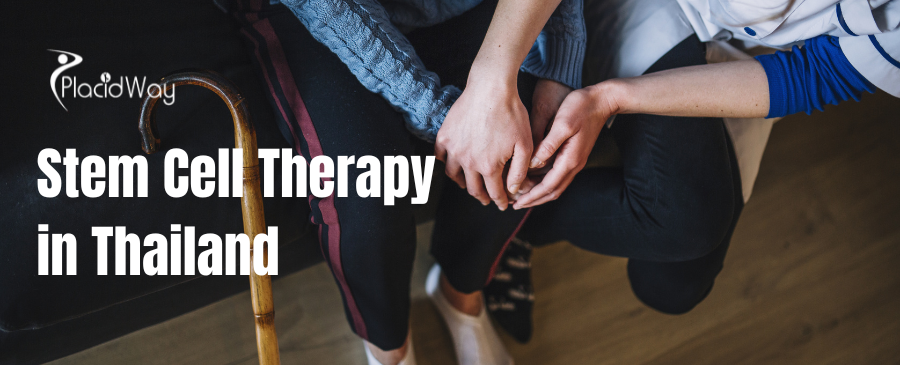
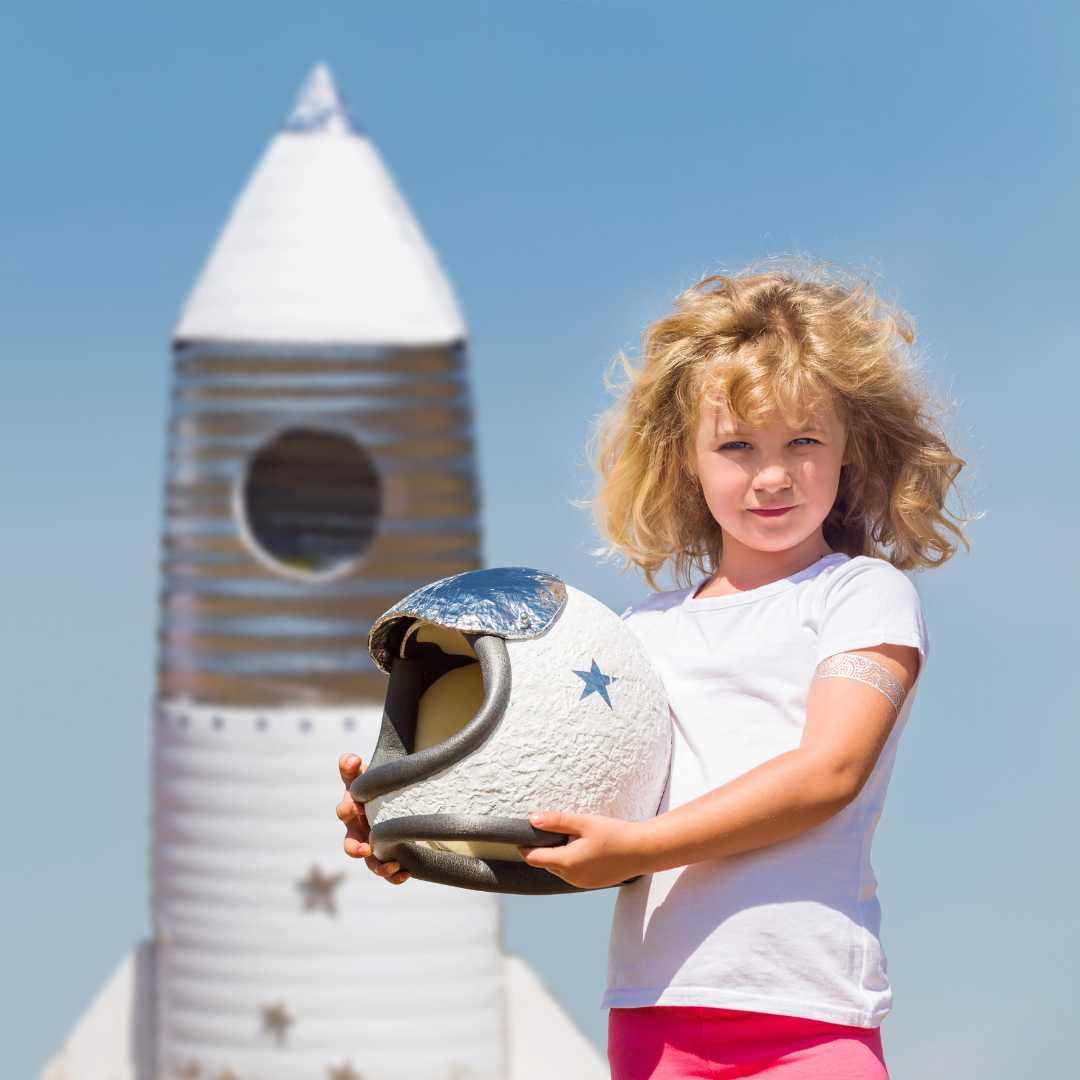

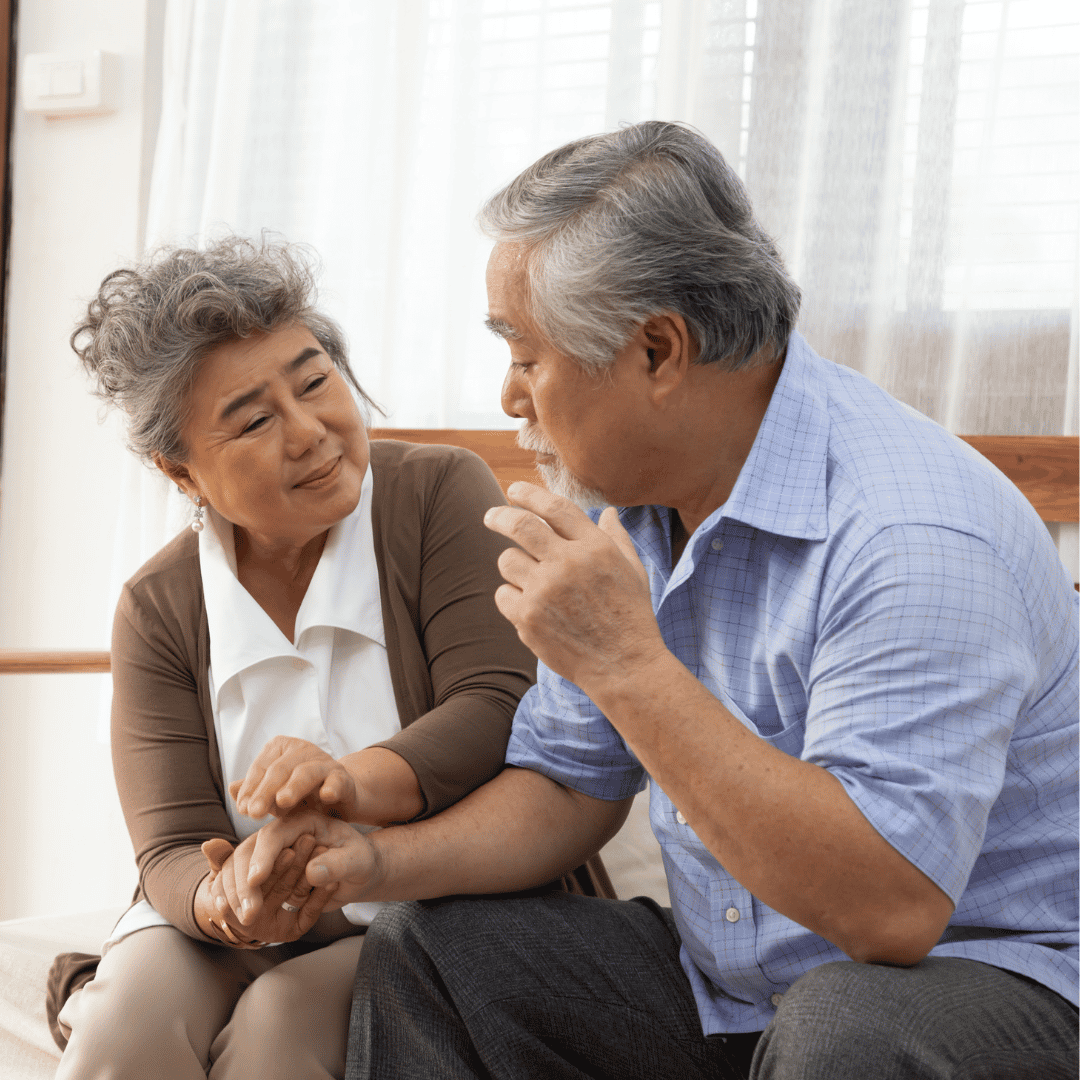
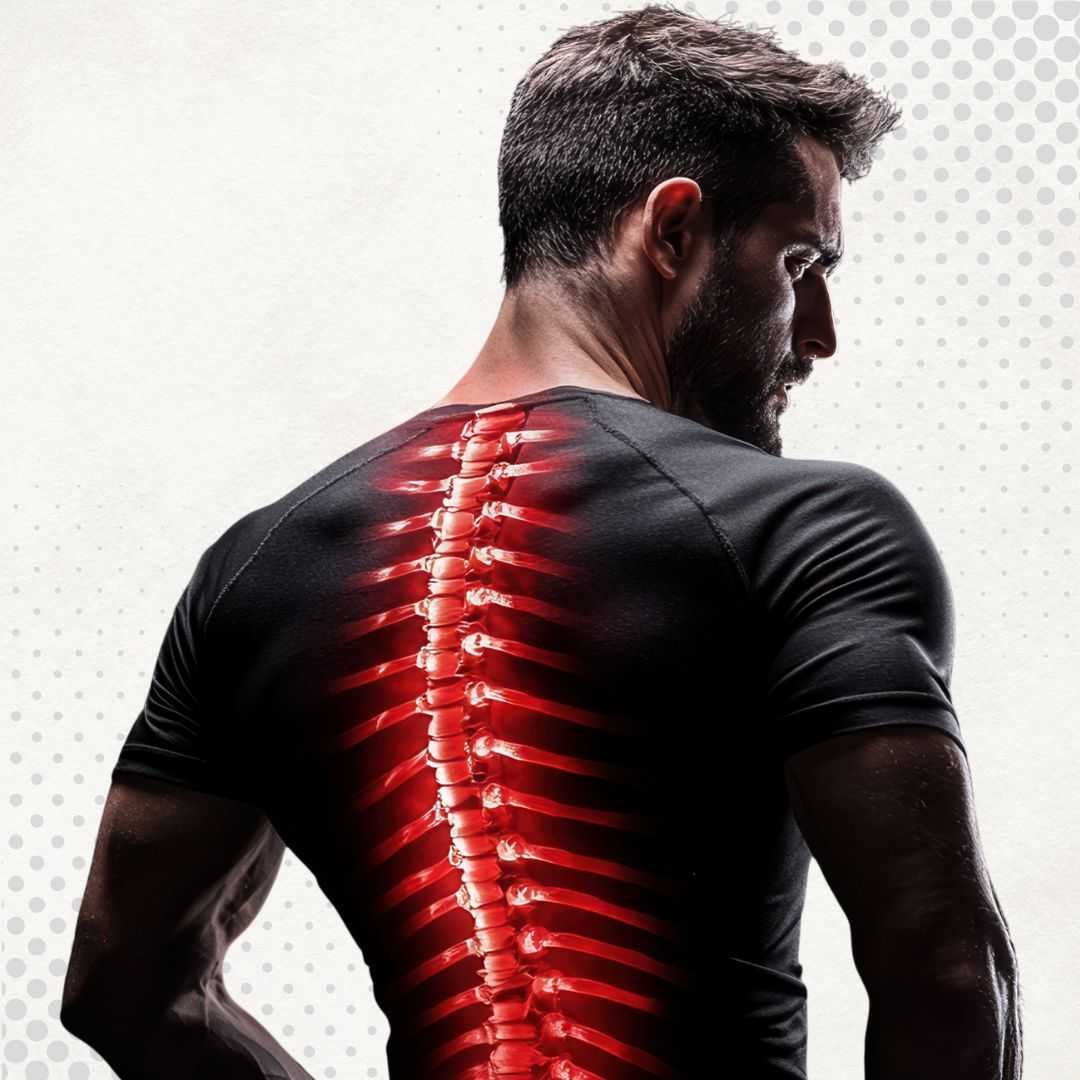
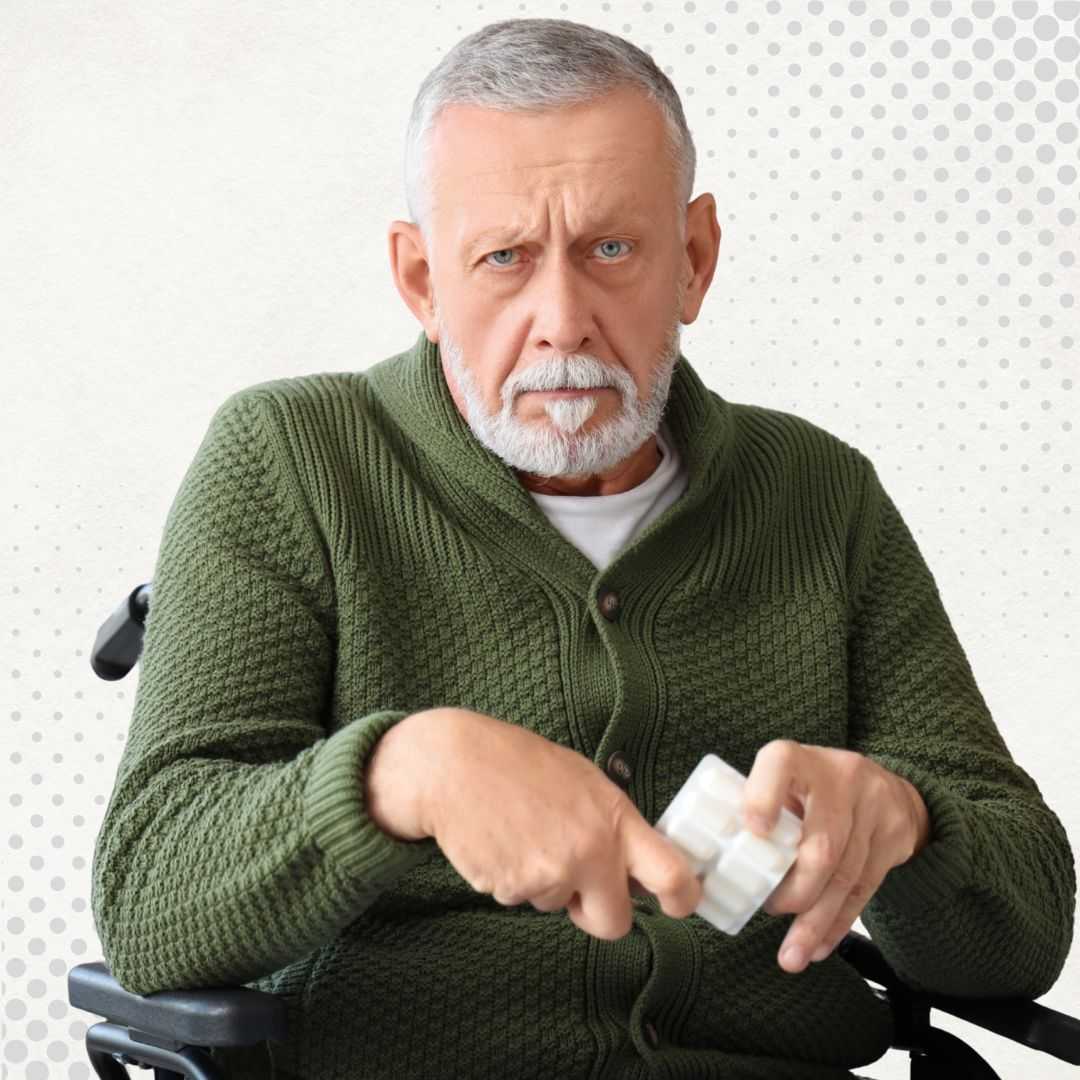

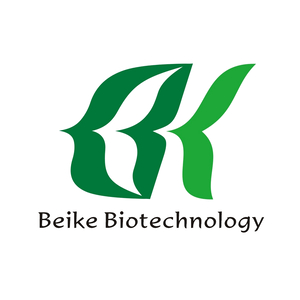
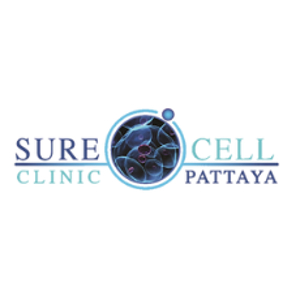
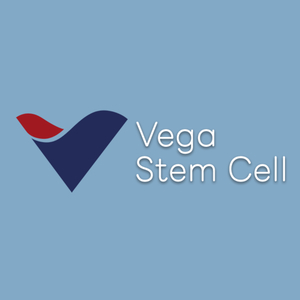







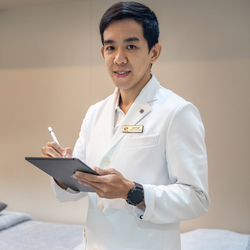
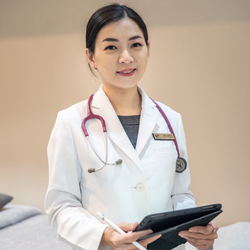
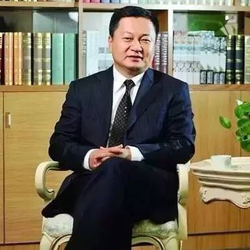
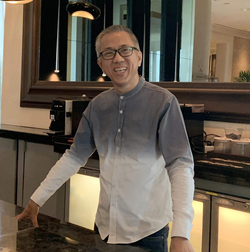


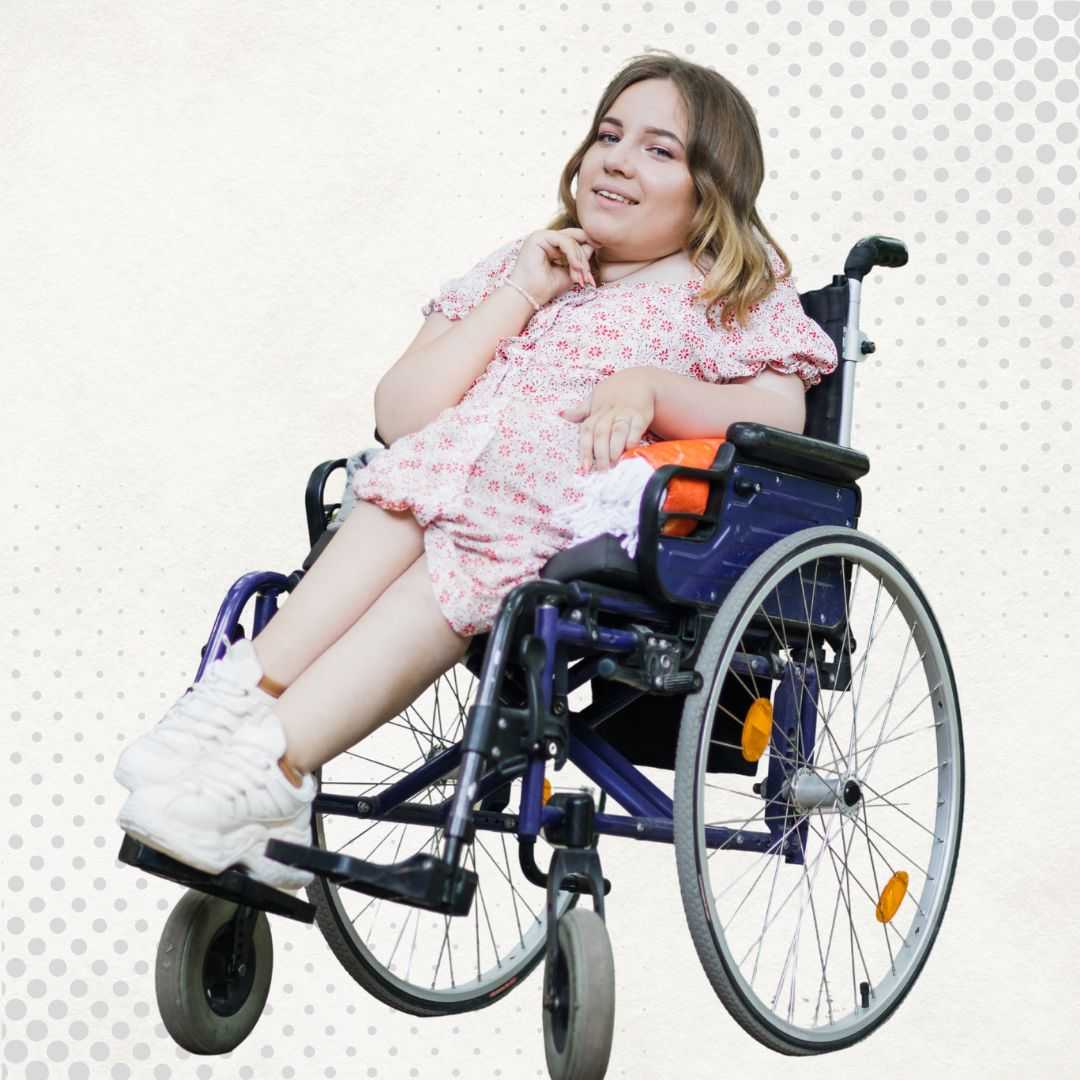

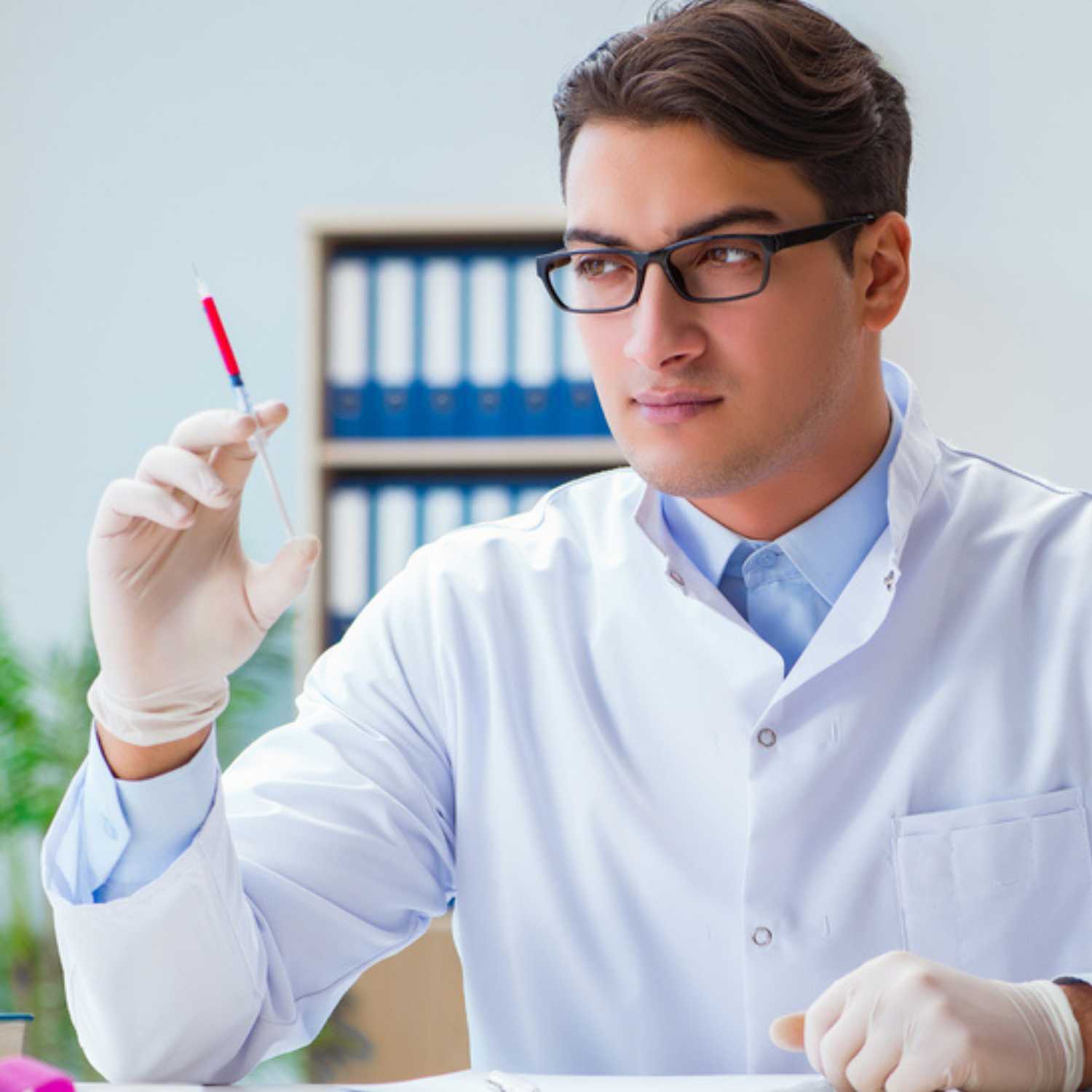
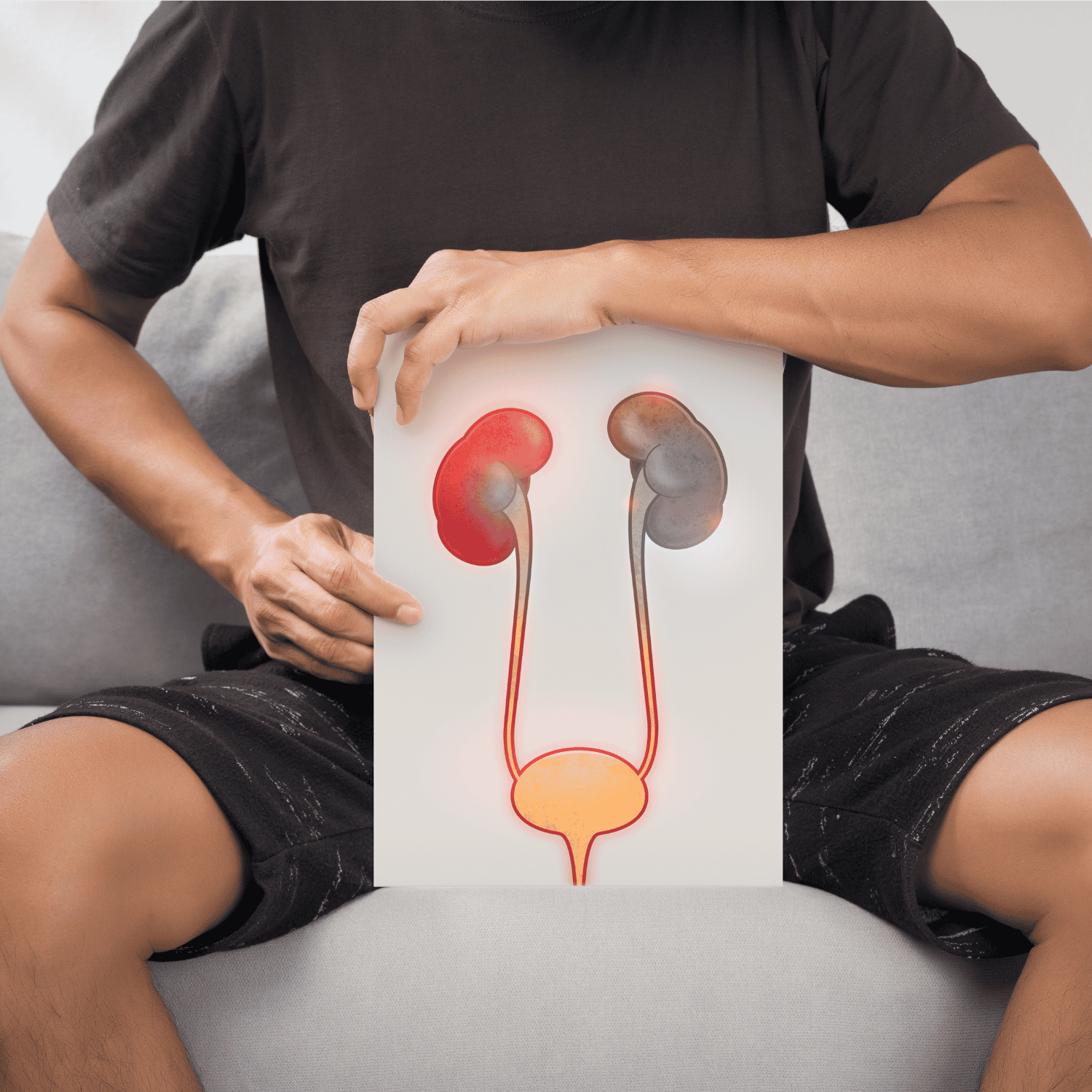




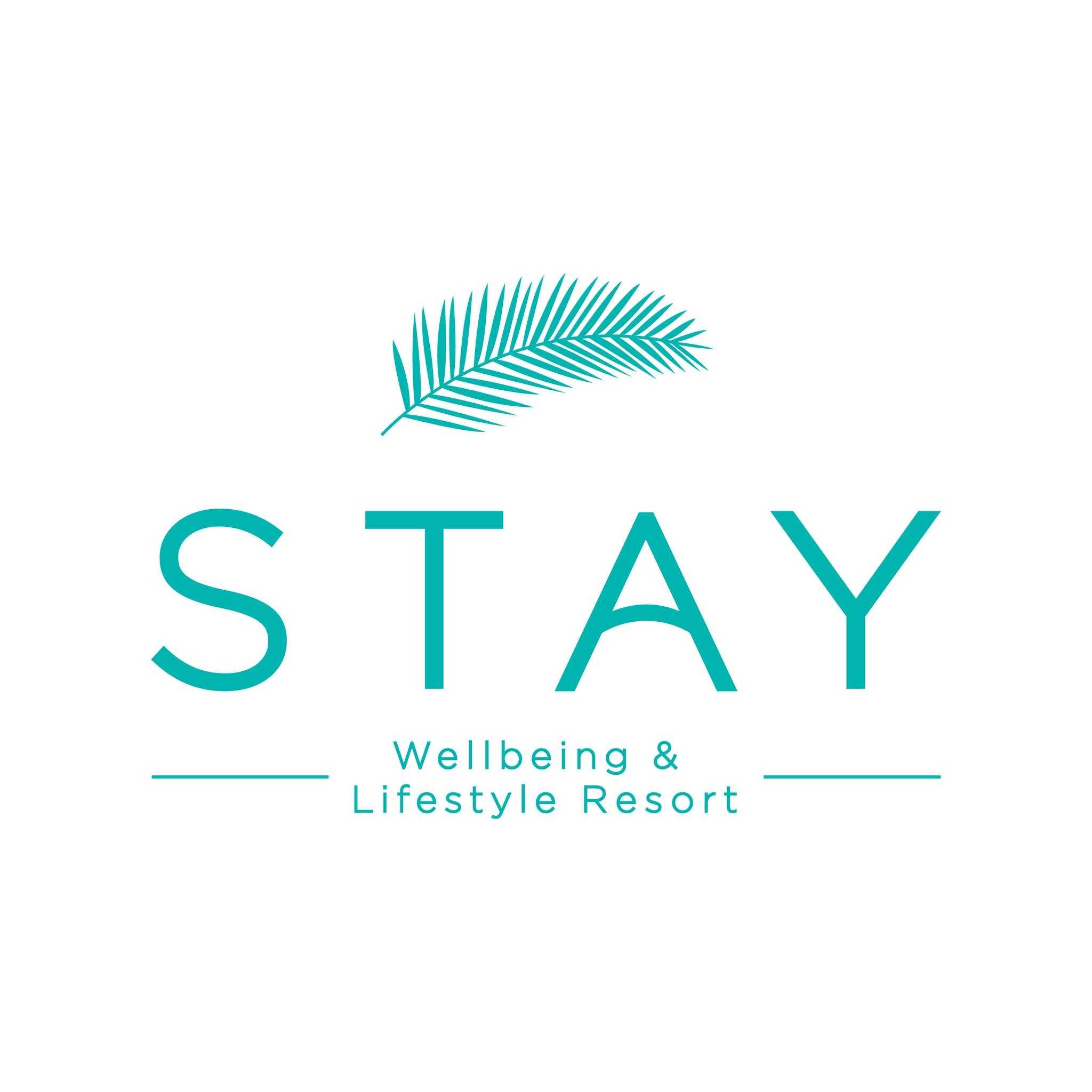
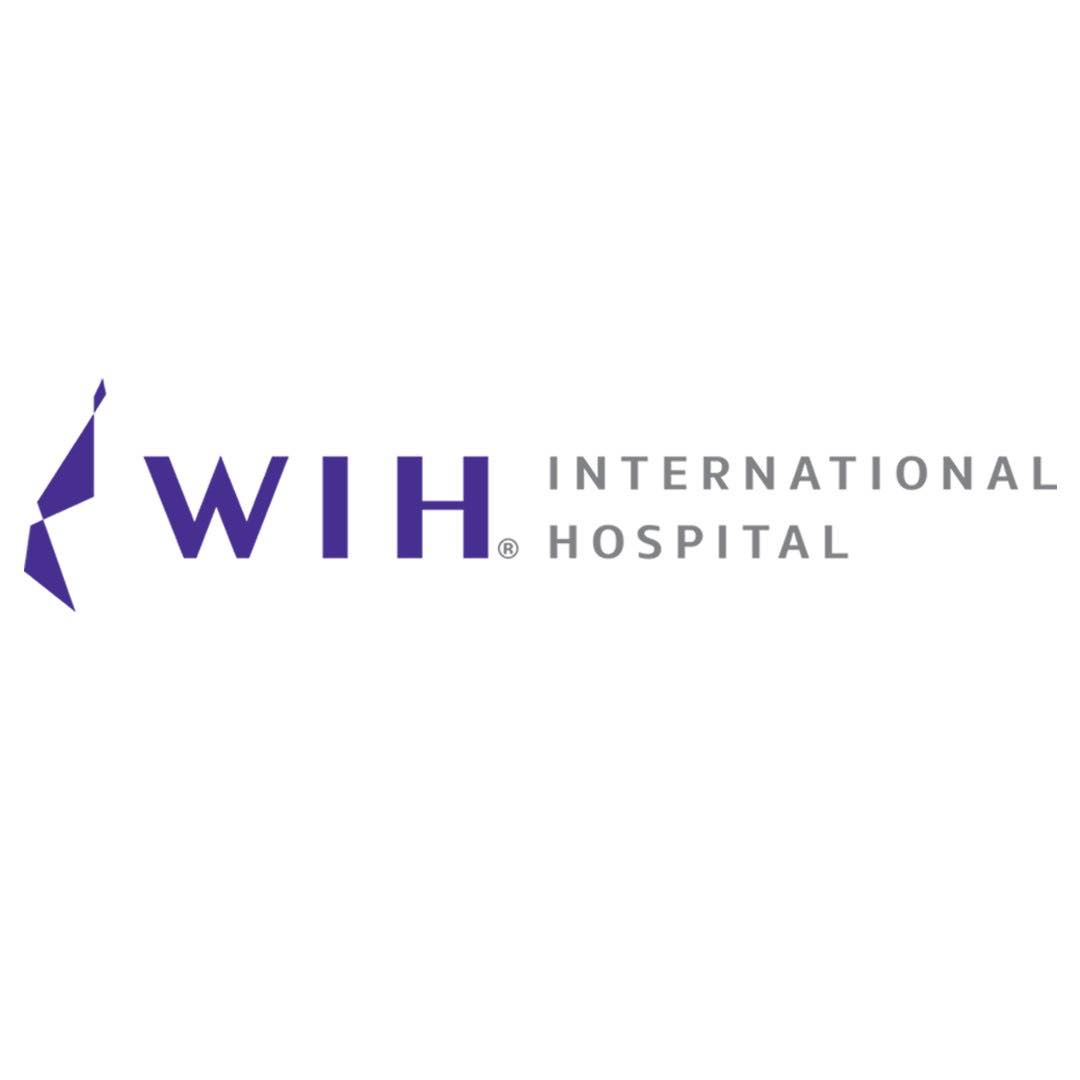

Share this listing